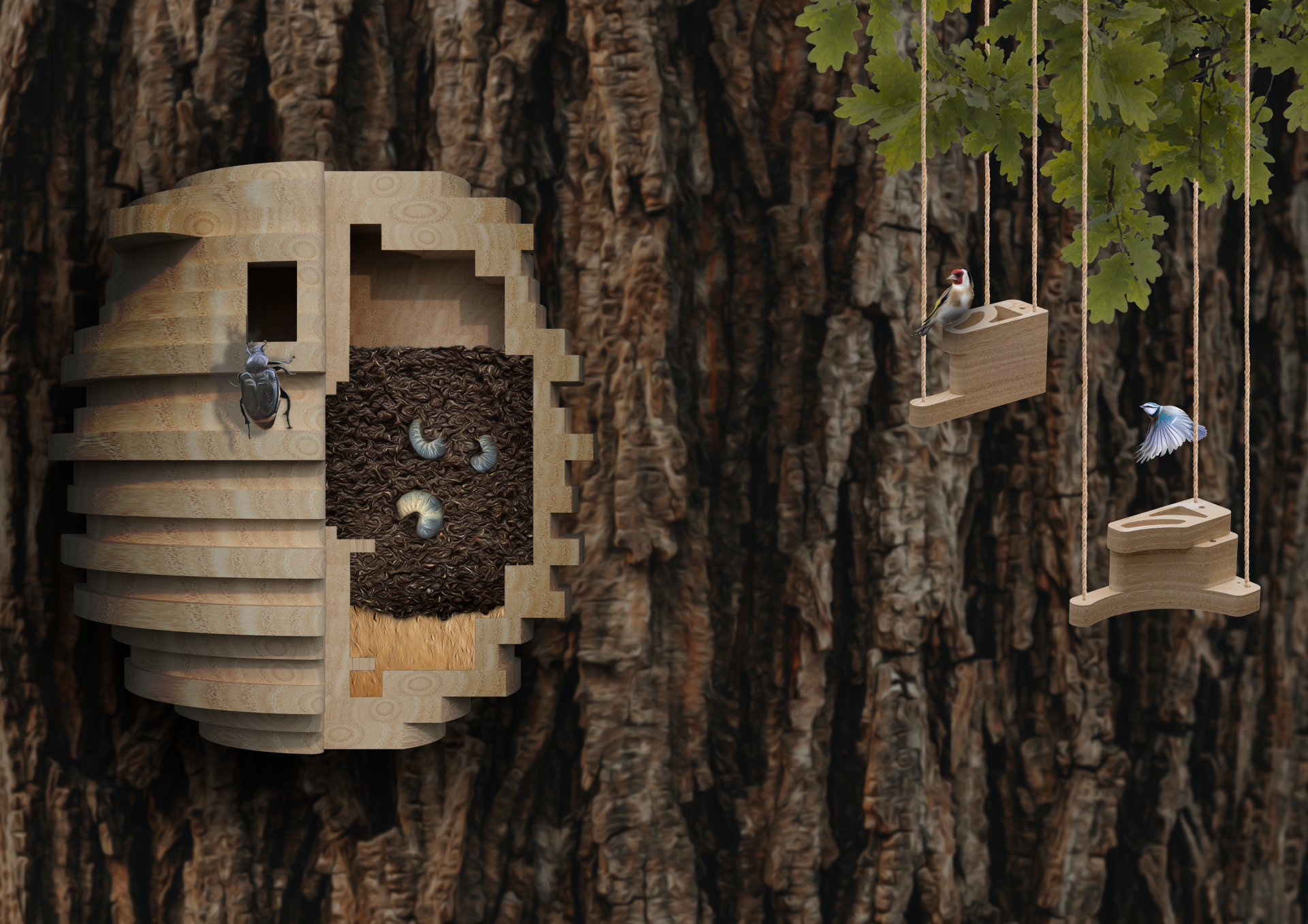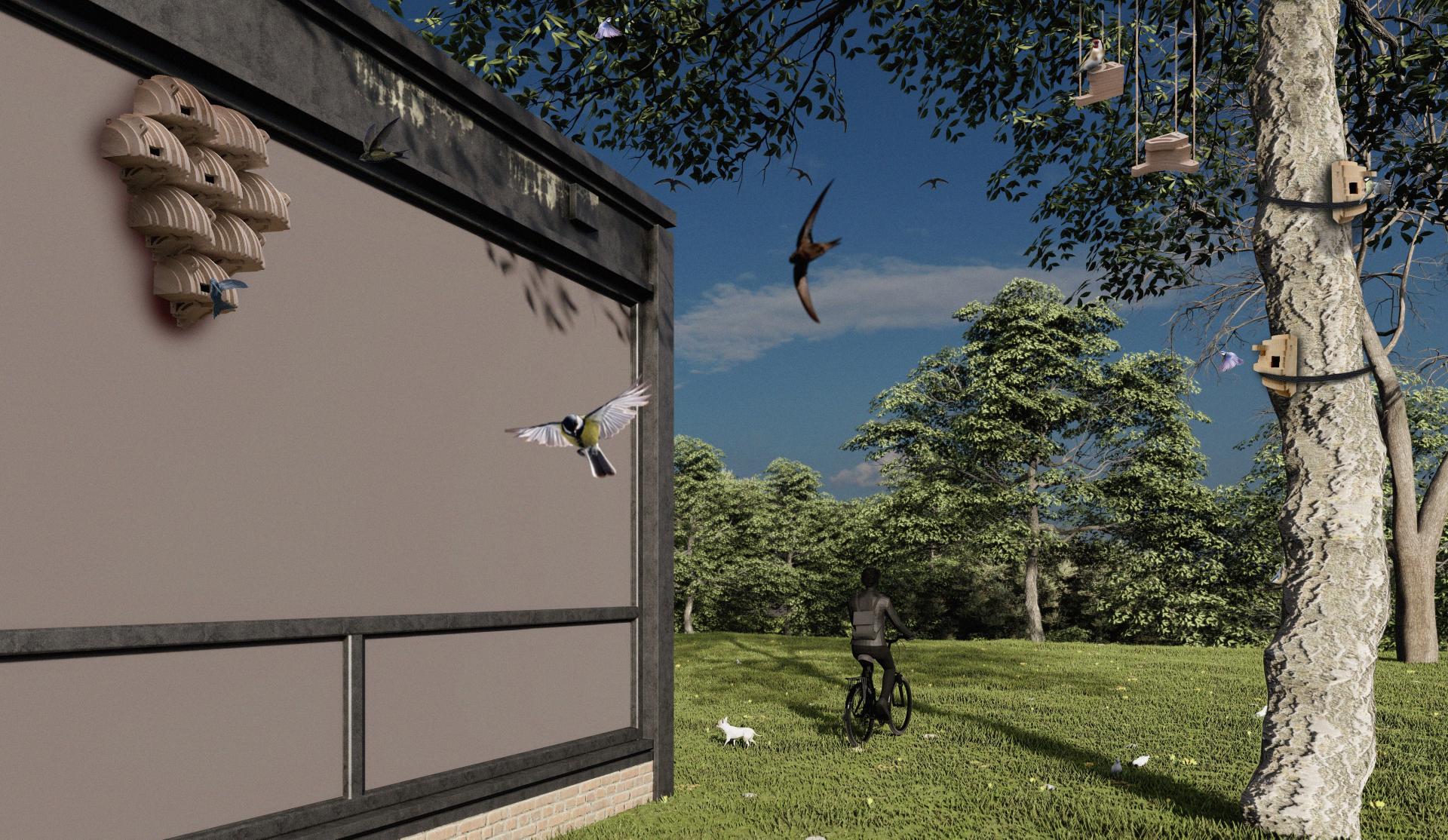ZUBI. Building a bridge for the future.
Basic information
Project Title
Full project title
Category
Project Description
'ZUBI' is a multi-species nesting box for a large range of bird species, including the bird of the year 2021 the common swift, and a whole range of saproxylic invertebrate endangered species that are local to Navarra (Spain) and other parts of the EU. Designed to be manufactured and built by carpentry students with local wood manufactures, within environmental education programs, makes this nesting box an educationally purposed choice, that also promotes sustainability, conservation and nature.
Geographical Scope
Project Region
Urban or rural issues
Physical or other transformations
EU Programme or fund
Which funds
Description of the project
Summary
Since the begining of humanity, us humans, have been deteriorating the ecological status of our surroundings, but it is now that we have the consciousnes of the damage we have done and that still do. That's why we need to start to amend our mistakes.
Nature is still everywhere, in a bigger or smaller portion. Urban environments are still full of wildlife, but we are too occupied to notice it sometimes, and only a few people that study environmental sciences know the amount of fauna and flora species that co-live with us in cities and their importance for a good ecological status of these environments. Nature has evolved and adapted to non-natural spaces, and some species are not forestrial anymore because of the human invasion of antique forests and the destruction of their natural habitats. Even if it seems like all the damage has been done, we are still destroying these adapted habitats for these now urban wildlife species, but it is time for us to rethink what we do and promote coexistence, as well as protecting the spaces that surround our cities and the rest of ecosystems.
Artificial nesting boxes have been used for a long time by biologists to promote species display and help them breed due to the lack of natural spaces to do so. Now, in an over produced world there is not only the need to conservate forestrial species, we also need to protect the ones that coexist with us in the same urban spaces.
With 'ZUBI' you create a new bridge to the future, a bridge that connects cities and forests, people and nature, students and animals, birds and invertebrates, in a human made but natural symbiosis.
Key objectives for sustainability
'ZUBI' is a sustainable nester in three different levels: sustains nature, sustains education and sustains circularity.
One of the easiest ways to help endangered fauna species recover their populations is using artificial nesting boxes, both in cities and any other environments that are inhabited by these species. In Spain there are a lot of bird species that are endangered that need to be helped to recover their populations, and some of them have evolved to be only urban species, like for example the common swift (Apus apus), a bird species that visits spaniard cities and some other EU. countries during the summer to breed in old building cavities. Nevertheless, there are a lot of urban passerine bird species that need display like the blue tit (Cyanistes caeruleus), great tit (Parus major), short-toed treecreeper (Certhia brachydactyla), and them Eurasian wren (Troglodytes troglodytes). Forestrial species of invertebrates are as important as these urban bird species, that's why ZUBI can harbor these too. Some of the most important species involve de saproxylic invertebrates like Osmoderma eremita, biodiversity and good ecological status indicators that keep centennial oaks alive.
Environmental education is more than necessary now a days, that's why this nesting box is designed to take part of the academic curriculum of some degrees like carpentry, to bring closer natural sciences to a bigger percentage of society. Creating awareness and a feeling of fulfillment.
Designed to be produced with locally harvested wood from regulated forests and no metal parts involved in its construction, as well as no non-biodegradable chemical adhesives, 'ZUBI' is a circular nester that promotes the reduction of carbon footprint, local production and local economy, and that protects local ecosytems from the begining of it's product live till the end by serving as food for the earth and as a habitat for xylophagic species.
Key objectives for aesthetics and quality
Aesthetics are very important for everything located in urban environments, as well as in natural spaces. When we talk about a product that it's main task is to harbor endangered species like the common swift or Osmoderma eremita, we might think that the actual function of the object is more important than the aesthetics of it, but maybe, the actual aesthetics can come from its functionality, as it is the case with 'ZUBI'.
Depending on the location and the species that it will manage, it can be installed and combined in different ways; horizontally for common swifts in cities, vertically for other passerine birds in trees both in cities or forests and also vertically for saproxylic invertebrates (Osmoderma eremita) in forests. This way, the same design and the same nester can be used in different ways reducing the production and also de wood used.
When used in cities in the horizontal orientation, it can be installed in colonies to fulfill the needs of the common swift that usually lifes in big groups of couples in the same place, using a cavity per couple. This way, the curved and laminated design that creates the internal cavity with wood rings, helps with floods and creates an interesting pattern on buildings.
When used for saproxylic invertebrates, it is used vertically, leaving the door that horizontally is located in one side on top, allowing the box to be filled with organic material to allow these invertebrates to live there. It is also possible to unify two boxes that are symmetrical, creating a bigger cavity and increasing the employment possibilities. In forest it is best to avoid making holes in trees, so the box can be installed with a belt thanks to the laminated build, creating the illusion of beign a bee nest, acting as a biomimmetical object.
Lastly, there is the possibility of creating smaller boxes by combining less rings, to create boxes that are installed vertically for passerine bird species.
Key objectives for inclusion
Environmental education should be something that everyone in society needs to receive, sooner or later. With 'ZUBI', the actual production is thought to be performed by carpentry students, bringing the opportunity of participating in biodiversity conservation to a larger percentage of society.
There are a lot of people from the creative field and the production field that can do a lot more than what we are taught that we can. We can study our surroundings, and create beautiful and useful things that will sustain nature, local economy and productions systems, and the future generations. Public participation for environmental acts is very important, we all live in the same world, and the weight of mantaining it shouldn't be on the shoulders of the few people that decide to study and work on the environmental field.
The professionals that have the access to local products and industries, the ones that can make the conservation of the planet affordable are the ones that need to start doing actions to make this possible, with for example, 'ZUBI'.
'ZUBI' is also a product that creates a symbiosis between designers and producers, as well as in between people and nature, urban environments and forestrial ones. Making people part of conservation activities, creating an engagement within citizens and the natural surroundings, bringing the feeling of importance and fulfillness.
Physical or other transformations
Innovative character
These three dimensions: sustainability, aesthetics and inclusion are combined with ease in 'ZUBI'. As it is a social project to promote local endangered species display and conservation, that brings the aesthetic part of function and promotes not only environmental education but also local production from citizens.
From the point of view of natural sciences, these idea can be exemplary due to the combination of environmental education and consciousness, sustainable and local production, and conservation and display purposes, that at all times involve society behind the priority of keeping and eye on the good status of natural environments.
It's impossible to keep a good ecological status of cities and other ecosystems without people knowing what is going on, why, and how it can really be kept like that. Actual environmental education programs embody nesting boxes, but not as a curricular part of professional studies, if people that know how to do the boxes knows why these are necessary, they would have a better quality and will do a better job at producing them, and will be able to work hand to hand with environmentalist. Unifying the work of designers, industries and biologists to help nature.





